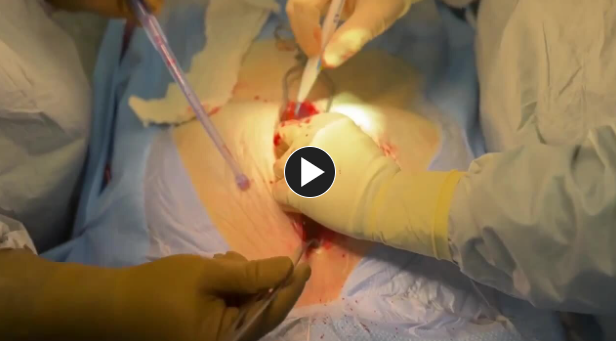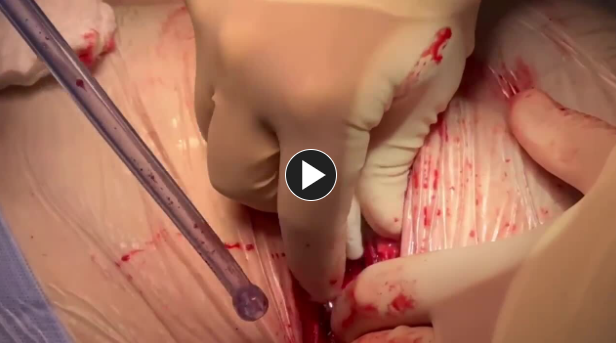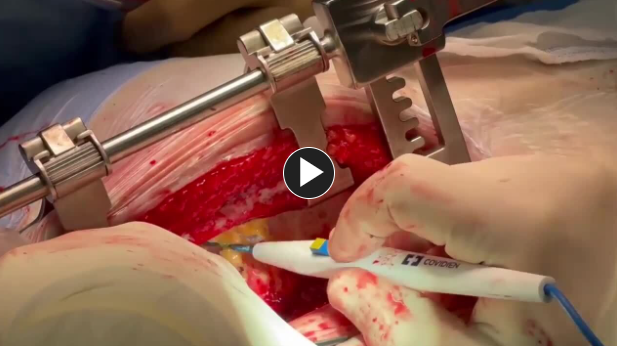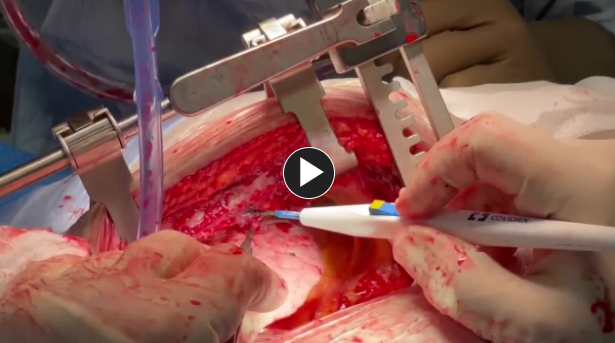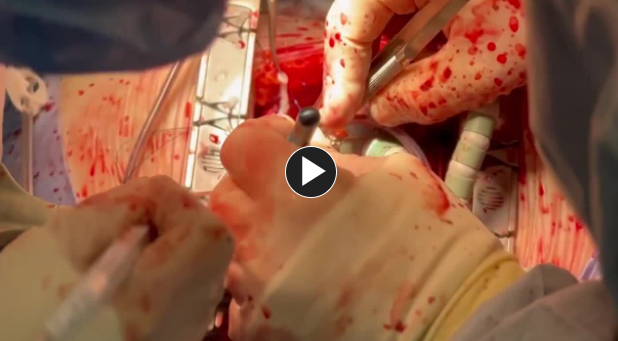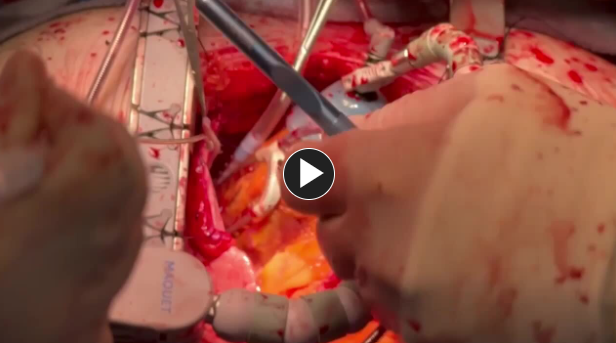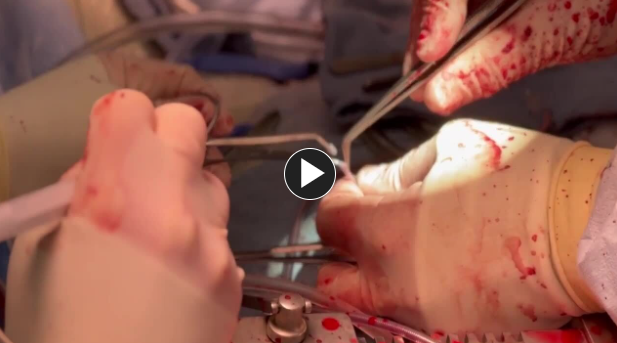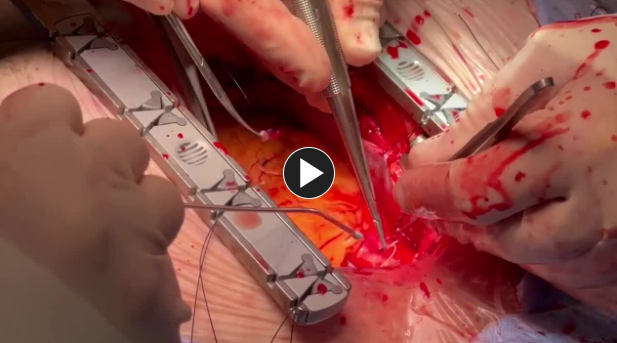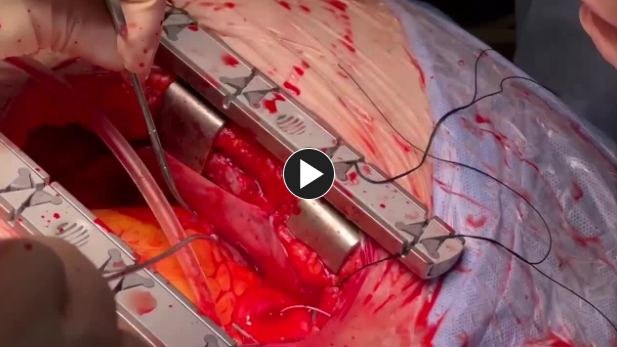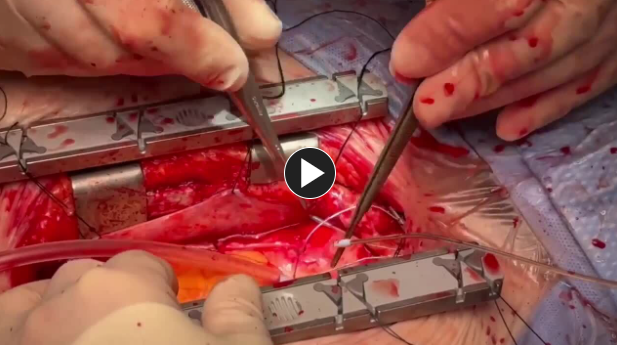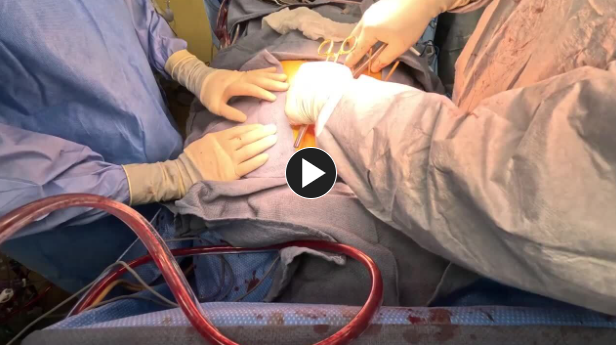Arthur Thomas Martella, MD & Bob Kiaii, MD
Coronary Artery Bypass Grafting (CABG)

Procedure Overview
A coronary artery bypass graft (CABG) is a heart bypass. The CABG procedure involves “bypassing” blood around blockages in the proximal coronary arteries. CABG surgery frequently involves harvesting blood vessels from the chest, arm or leg to be used as conduits in the bypass, followed by coronary anastomosis. The procedure can be performed On-pump or Off-pump.
INDICATIONS:
- Critical stenosis of the left main artery.
- Severe angina that does not respond to medication.
- Significant stenosis (> 60%) in at least one major coronary artery not amenable to PCI.
- Significant stenosis of all three major coronary arteries.
- Repeated angioplasty and repeated restenosis after angioplasty.
- Blockage in a graft created in previous surgery.
CONTRAINDICATIONS:
- Patients with coronary disease that’s amenable to PCI (stenting).
- High risk based on medical condition for open heart surgery (i.e., severe COPD, renal failure, obesity, age).
- CAD that is not amenable for bypassing.
- Patients without significant left anterior descending artery (LAD) disease.
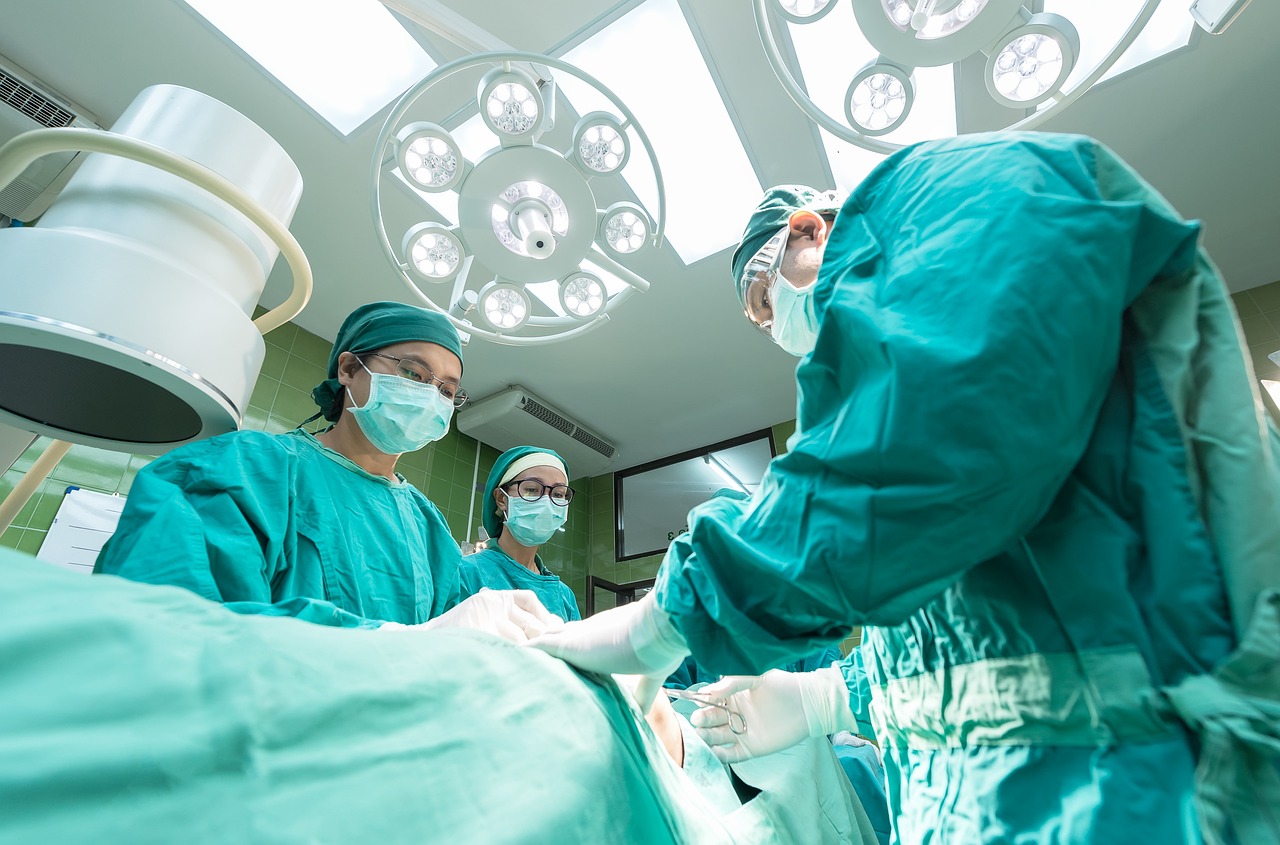
Pre-operative Patient Care
Typical recommendations for pre-operative care may include, but are not limited to, any of the following:
- Directed History & Physical Exam.
- Laboratory Testing - CBC.
- Laboratory Testing – Comprehensive Metabolic Panel.
- Laboratory Testing – Coagulation Profile.
- P2Y12 Test.
- Preoperative Carotid Ultrasound Study.
- Preoperative Pulmonary Function Test.
Prep & Patient Positioning
Prep
- Femoral arterial access is sometimes obtained when radial artery monitoring is a concern.
Common patient positioning:
- The most common position used for cardiovascular procedures is the supine position. This type of position allows the best possible surgical access to the chest cavity.
Common room setup
- The surgeon is almost always on the right side of the patient.
- Assistant on the left side.
- Bypass machine is usually close to the patient and can be on either side.
- Monitor that is positioned so the surgeon can see the hemodynamics during the procedure.
- Transesophageal echocardiogram machine is at the head of the patient.
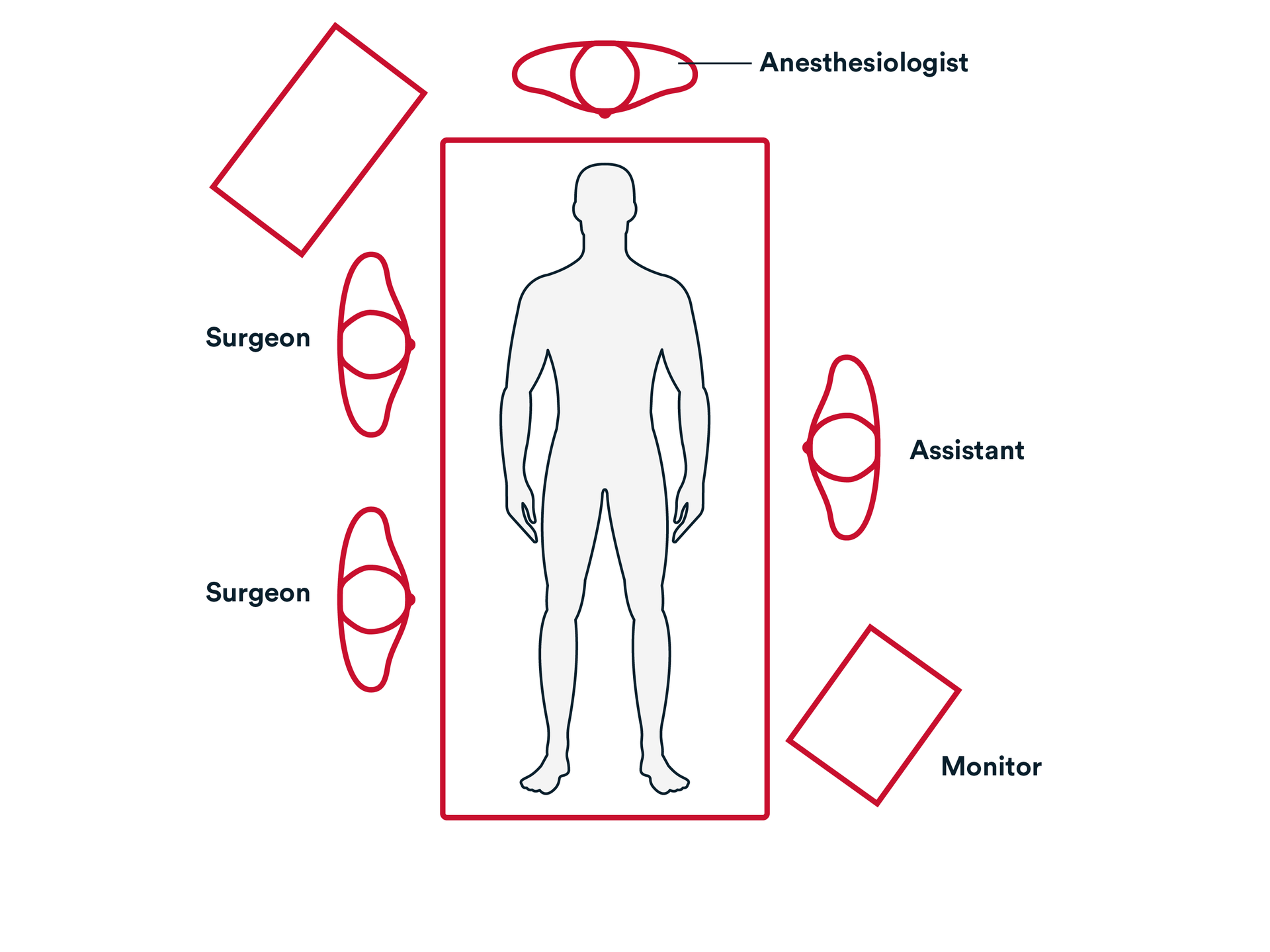
Operative Steps
1. Access
Sternotomy:
- Skin incision is commonly made in the midline from jugular notch to xyphoid.
- NOTE: more advanced surgeons may choose to reduce the size of the incision, particularly at the top.
- Cell-saver suction is utilized to retrieve any blood loss during the procedure.
- Generally, at the sternal notch staying on the bone with the bovie cauterization and then using blunt dissection with a finger to palpate behind the upper manubrium to confirm that the space is clear. Similar blunt dissection at the xyphoid.
Sternotomy:
- Bleeding from the sternal marrow and periosteum is commonly controlled to avoid ongoing oozing throughout the procedure. A topical absorbable hemostat such as SURGICEL™ FIBRILLAR Absorbable Hemostat can be applied to the sternal edges and bolstered with a sterile drape and the retractors.
Conduit Dissection:
- Selecting the most durable bypass conduit is key to a successful CABG. The best conduit depends on the clinical circumstances of the patient. There are 3 conduit choices: 1 - Internal mammary (thoracic) artery (IMA); 2 - Saphenous vein graft (SVG); 3 - Radial Artery (RA).
Dissection of the Left Internal Mammary Artery (LIMA):
- The mammary artery is exposed with a retractor.
Dissection of the Left Internal Mammary Artery (LIMA):
- The LIMA is typically left attached to the subclavian artery proximally and divided distally.
- Standard practice is to soak the LIMA in papaverine solution to promote vasodilation.
Dissection of the Left Internal Mammary Artery (LIMA):
- The LIMA is typically left attached to the subclavian artery proximally and divided distally.
- Standard practice is to soak the LIMA in papaverine solution to promote vasodilation.
Dissection of Additional Conduits:
- The radial artery or greater saphenous vein can be harvested using an electrocautery device or an advanced energy device.
- RIMA may be harvested if indicated.
Cannulation:
- The pericardium is opened from the diaphragm to its reflection at the upper ascending aorta, and the heart is exposed.
- NOTE: The upper pericardium is frequently covered in fatty tissue and remnants of the thymus gland. This can be a source of ongoing bleeding.
- Usually, 2-0 silk pericardial sutures are placed to retract the pericardium and expose the heart and great vessels.
- Arterial Cannula is placed.
- Venous Cannula is placed
- Retrograde Cardioplegia Cannula may be placed as needed. NOTE: Retrograde Cardioplegia cannula is usually placed in more complex procedures.
Arresting the Heart:
- An aortic cross clamp is applied across the aorta between the aortic cannula and the aortic root needle cutting off the flow of blood from the aortic cannula to the heart.
2. Repair (Bypass Grafting)
Technical Considerations for Distal Anastomosis:
- There are two general approaches to the sequence of anastomoses:
- Single clamp technique: All proximal and distal anastomoses are completed while the heart is arrested.
- Two clamp technique: All distal anastomoses are completed while the heart is arrested and then the cross clamp is removed, and a partial occlusion clamp is placed on the ascending aorta to complete the proximal anastomoses.
Identification of Blocked Vessels:
- Once the heart is arrested and empty of blood, the surgeon identifies the arteries to be bypassed, and determines the best revascularization technique to be deployed with the conduit available.
- The cardiac catheterization is the road map for the surgeon, and it is frequently available in the room during the procedure.
Distal Anastomosis:
- The target vessel is generally located beyond the critical stenosis.
- The target vessel is exposed.
- NOTE: The goal is to identify a place on the target vessel that is beyond significant disease but at a point where the vessel is of reasonable caliber for anastomosis.
- An arteriotomy is made in the vessel of a length that is approximately corresponds to the beveled end of the conduit.
- The conduit is beveled at 30 degrees and notched at the heel.
Suturing the Anastomosis:
- Approximately three stitches are performed in the same manner at 2, 1, and 12 o’clock and then two more on the left side of that heel at 11 and 10 o’clock, followed by a parachuting technique in which the conduit is then brought down to the target vessel.
- NOTE: Alternatively, a U-stitch can be placed at the heel of the anastomosis without significant parachuting and both side of the suture are run.
- The anastomosis can then be completed by placing another six stitches, evenly spaced, utilizing the same technique, around the toe and back at the 3 o’clock position, where a final knot is placed on the side to secure the anastomosis.
- NOTE: Often, the conduit is distended with solution gently injected by the assistant while tying the sutures to avoid any constriction of the anastomosis. This also allows the surgeon to check for any leaks.
The LIMA anastomosis: JACE HERE
- This is usually the last distal anastomosis and is almost always placed to the Left Anterior Descending (LAD) Artery.
- Prior to starting the anastomosis, its confirmed that there is no twisting of the mammary artery.
- An arteriotomy in the LAD is made usually at the junction of the middle and distal thirds of the vessel however the patient anatomy and extent of disease will dictate where this is.
- Once this anastomosis is complete the surgeon may briefly remove the bulldog clamp on the mammary artery to check for any bleeding.
- The sides of the mammary artery are frequently sutured to the epicardium with 6-0 polypropylene sutures, such as Prolene™ Polypropylene Suture.
Proximal Anastomosis (single clamp technique):
- The vein is cut at the appropriate length.
- Arteriotomy on the aorta is created usually with a #11 blade.
Proximal Anastomosis (single clamp technique):
- A running 5-0 or 6-0 polypropylene suture such as Prolene™ Polypropylene Suture, is commonly used for the proximal anastomosis; a running 6-0 or 7-0 polypropylene suture such as Prolene™ Polypropylene Suture, is commonly used for an arterial proximal anastomosis.
Proximal Anastomosis (single clamp technique):
- When the bypass grafts are complete the cross clamp is removed, the patient is placed in Trendelenburg Position.
- The cross clamp can be removed and CPB flow restored to normal.
Preparing to disconnect from CPB:
- Once the cross clamp is removed blood flow to the coronary arteries is restored and spontaneous heart rhythm usually returns.
- Temporary pacing wires and chest tubes are placed.
- If the heart does not spontaneously start the temporary pacing wires may be used.
NOTE: It is important to visualize both lungs expanding while anesthesiologist begins ventilating the patient
Discontinuing cardiopulmonary bypass and cannulation:
- Once there is an adequate rhythm with reasonable contraction of both ventricles and the both lungs are being ventilated, the patient is ready to be weaned from the heart-lung machine.
- When CPB has been discontinued, the venous cannula, retrograde cannula and aortic root needle is removed.
- During this time any blood volume remaining in the heart-lung machine is returned to the patient.
- The aortic cannula is removed.
- Proximal anastomoses and cannulation sites are inspected for bleeding / oozing.
- Integrity of the bypass grafts is checked for twists or kinks.
- The overall heart function is assessed.
- The sternotomy retractor is removed.
- A laparotomy pad is placed in the incision and chest wall is inspected for bleeding.
- The wounds are closed using synthetic absorbable monofilament, such as Monocryl™ Plus Antibacterial suture, or a knotless tissue control device, such as STRATAFIX™ Knotless Tissue Control Devices, and a topical skin adhesive such as DERMABOND™ PRINEO™ Skin Closure System or any appropriate dressing.
Post-operative Patient Care
Typical recommendations for post-operative care may include, but are not limited to, any of the following:
- Patient usually recover in ICU setting with continuous hemodynamic and EKG monitoring.
- Patients are assessed for bleeding from the chest tubes.
- Patients are sedated and on the ventilator for up to 24 hours, depending on condition.
- 24-48 hours post-surgery transferred to a monitored step down unit.
- Discharged 4-6 days post-surgery.
- Follow-up withing first 2-4 weeks, depending on surgeon practice.
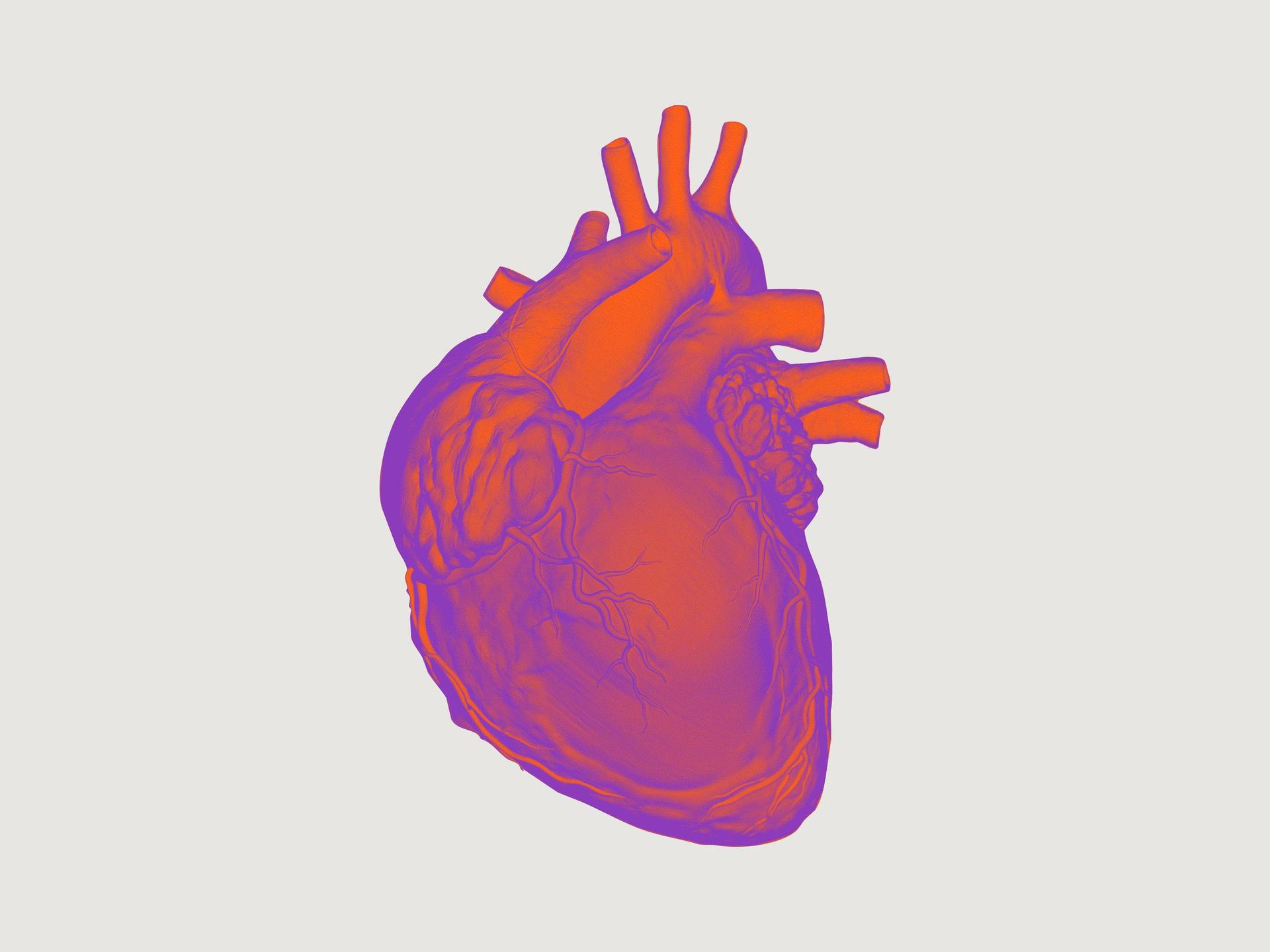
Access our on-demand Cardiovascular video library
Looking for more? Explore procedural videos and webinars from global experts
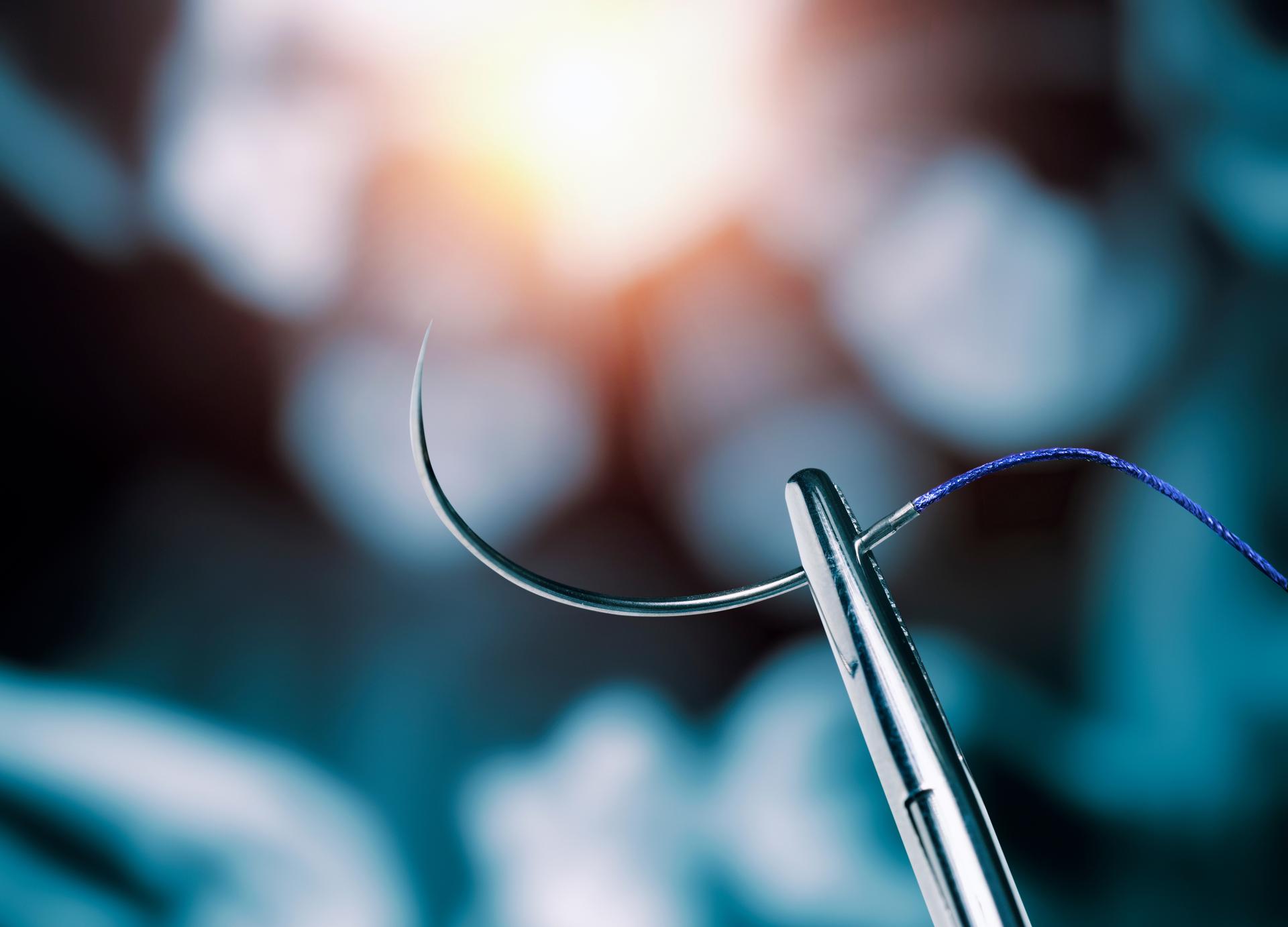
SuturED
SuturED consists of e-modules covering topics such as suturing techniques and the science of tissue management

